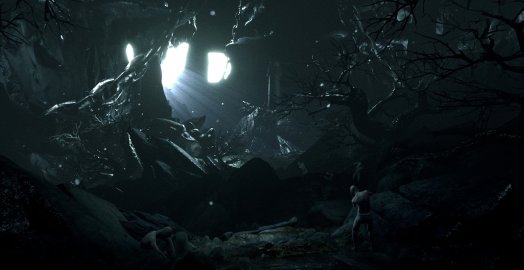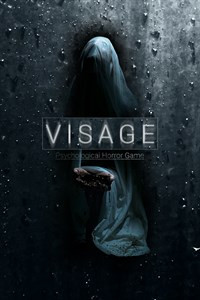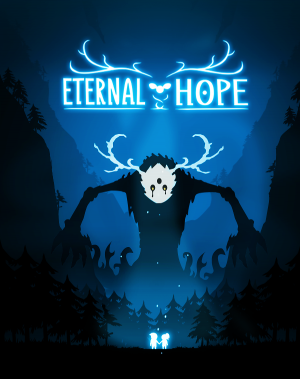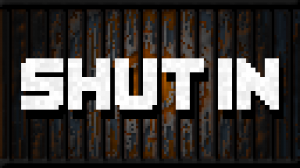Review for Visage

Back in August 2014, a short horror demo known as P.T. (abbreviation for “Playable Teaser”) became an industry phenomenon, heralded for its looping structure, cryptic puzzles, and legitimate frights. This mysterious project was ultimately revealed as the precursor for an upcoming Silent Hill revival. Due to some behind-the-scenes turmoil, however, the final project never saw the light of day, and publisher Konami decided to remove P.T. from the digital marketplace. But gamers and developers alike weren't willing to let P.T.'s legacy die so easily, as proven by the successful Kickstarter campaign of SadSquare Studio's Visage, a spiritual successor of sorts to the specific brand of atmospheric, psychological horror previously seen in P.T. That isn't to say Visage has no ideas of its own, but simply that it postures itself as a “what could have been” for the proposed Silent Hill we never got. At its best, Visage is one of the scariest games on the market, and at its worst it's derivative of the less imaginative trends of the last decade in horror games. But more compelling than not, it feels like a course correction for a genre inundated by cheap knock-offs and stagnant ideas.
Visage is broken into four chapters of varying length, mostly set in a two-story residence with a brutal history. There is no correct order to approach these chapters, and each of them present a disparate narrative focused on a particular (and particularly deadly) apparition, which altogether compose an anthologized whole. Don't expect any answers conveniently spelled out, but much can be surmised through audio tapes and environmental storytelling about the history of the house's ghostly inhabitants. Same goes for the player character, the silent Dwayne Anderson, who has a dark past all his own.
After a short, violent first-person cutscene depicting a murder-suicide, you awake in a sticky pool of blood in an otherwise featureless room. Through the door before you and into the eerie house, you assume full control in wandering its rooms and halls. Your initial steps are meant to familiarize you with the general layout, basic controls, as well as allow a space for brief tutorial windows to introduce the core mechanics of gameplay. Take your pick of keyboard and mouse or gamepad; both are comfortable from my experience. Most everything scattered about the environment can be interacted with: pull open drawers, turn on lamps and radios, pick up and inspect photographs, and empty coffee mugs or whatever other set dressing piques your interest. The more interactive a game world, the more immersed the player, and the more immersed the player, the more tangible the horror.
P.T. clearly isn’t Visage’s only inspiration. Like Amnesia before it, Visage employs a system wherein spending too much time in darkness depletes your sanity. Here, a red splotch at the bottom left corner of the screen serves as a warning that something is afflicting you, whether you're in need of a sufficient light source or a “paranormal event” (we'll come back to this) is weakening your mental health. Entwined with this indicator, a brain icon slowly comes into focus the lower your sanity gets, fading away on its own if you manage to stay in safety (a relative term here), thus bringing you back to a normalized state. If left unchecked, on-screen text eventually states that nothing can help you at this point but pills.
Without any physical health in need of consideration – because tangling with any of the game's enemies results in instant game-over – pills act as med kits, bringing you back to peak condition. Gulp down enough of a bottle's prescribed contents and you'll need to hunt down another of the handful of pill bottles can be found strewn about the confines of the house. Can't just call the pharmacy for a refill. That said, the quantity of resources (referred to here as “dynamic items”) overall isn't so low that I would describe the game as survival horror. I found the given amount of pills and lighters more than enough to get through the entire game without a struggle.
Lighters give you some visibility when you're desperate, but they won't protect you from sanity-draining effects. Keep the flame burning long enough and the lighter will run out of fluid. But, well, someone must be a chain smoker, because I've never seen so many spare Zippo lighters in one household before. For “healing” light sources, you'll need to bask in the glow of candles and incandescent light bulbs. Candles can be moved to various holders stationed in convenient locations, but their flame will blow out if you walk around with them in hand, and when placed they will melt down over time. Meanwhile, if a ghostly prankster breaks any light bulb somewhere in the house, you can change it for any fresh bulb you might have chanced upon. Once again, the survival aspect is a little underdeveloped, as I didn't find it all that necessary to plant candles or replace bulbs since there was always a nearby room with a working lamp or sconce. Nevertheless, dastardly spirits are prone to flip light switches on you, leaving you scrambling in the darkness.
Those paranormal events I mentioned previously are random occurrences, such as doors slamming on their own or lights turning off unaided. As your sanity is diminished, the frequency of these events increases, and chattering voices swell up just out of discernible earshot. The randomness of such occurrences is vital to keeping the player on edge and increasing replayability. Deadly ghost encounters also happen more often with low sanity; completely lose yourself and expect the inevitable game-over by way of the current chapter's baleful spirit suddenly manifesting and ending you without offering so much as a chance to run, setting you back to the most recent checkpoint or manual saved game.
Controls take some getting used to – apart from standard first-person movement, a unique “dual wielding” mechanic is featured. Dynamic items can be placed in either the left or right hand, allowing you to hold, for example, both a lighter to illuminate your path and a puzzle item simultaneously. Switching hands is as simple as tapping the space bar, though it's never necessary. Few objects actually require two hands, such as swinging the sledgehammer. Don't go thinking you'll be whacking ghosts into submission though, as acquired items are purely for progression and survival, with the odd collectible thrown in for good measure.
Where the system gets a little tricky is that swapping out or storing items is probably the only bit of gameplay left unexplained, and it took me awhile before realizing all I had to do was open the inventory screen, highlight one of the five inventory slots dedicated to dynamic items, and click to change held items (left-click for left hand, right-click for right hand). Initially assuming dynamic items could only be carried in hand or dropped, my confusion stemmed from the fact that a separate inventory section stores another set of items automatically, where you can select from options “examine” and “use” like a classic adventure game. Typically associated with puzzles, these are key items the game doesn't want you misplacing. Leave behind a one-of-a-kind dynamic item, however, and a message reassures you it has been sent to the storage room in the basement, so you always know where to go when you need that compass, camera, sledgehammer, what have you.
As you come upon the foyer within the opening minutes of Visage, you'll notice a crutch leaning against a banister. Nearby is a key rack with a single key inviting you to steal it away. Up the stairs, pinned to the door of a child's bedroom, is a crayon drawing. These objects activate the first three chapters proper, leaving the choice of where to start entirely up to you. I began with that enticing key, plunging directly into the “Dolores Chapter.” With nary a loading screen to break immersion, Visage seamlessly sets you off to find the correct keyhole. Out of all the chapters, this one will have you backtracking and pondering puzzle solutions the most. Though you may get lost at times, the game does a great job guiding you with visual and audio cues (as long as you're paying attention), such as blinking lights, slowly opening doors, blood trails, or a distinctive thump in the next room. As any good horror game should do, the experience embodies the kind of imposing atmosphere that makes the sound of your own footsteps an unnerving companion. Creaking, knocking, whispering – the sound design alone will surely keep you hesitating to take another step into the haunted passages.
The environment itself is small but dense. You will be opening every drawer and cabinet for key items, searching every inch of the game space to solve myriad, interlocking puzzles. Besides installing required items such as a phonograph handle or accessing new areas like the attic by pulling down the stairs with a far-reaching handle, some puzzle examples include following the needle of a compass through a foggy cemetery, finding the means to break open a glass sphere, and parsing hieroglyphs that correlate with adjustments you must make to interactables in a looping hallway. Typically, you are safe while solving puzzles in contained areas, but when wandering around, a malicious spirit appears sporadically to impede your progress. The only recourse in most cases is to run away frantically until it stops tracking you, marked by the tense music dying down. Unlike a lot of modern horror games, you won't be diving into lockers or under beds to hide.
The “Lucy Chapter” takes some obvious inspiration from Japanese horror, with its young girl obscured by long black hair, and another entity that lets out a gurgling croak in the vein of Kayako from The Grudge. In what is easily the most nerve-wracking chapter, Lucy is accompanied by a doll-masked shroud of a ghost with knives in place of fingers. This being is more relentless than the rest, repelled only by multiple flashes from a camera. To which I will add that the camera serves the additional purpose of replacing lighters in a pinch, which is important because this chapter utilizes darkness to a higher degree. Jump scares are also more prevalent, yet evenly spaced. As you delve further, ordinary environments springboard into surreal territory, whether through the use of impossible space or nightmarish landscapes steeped in metaphor. Sometimes you'll be trapped in an area of the house, searching for a way out, only to turn around and everything has changed, à la Layers of Fear.
After two well-crafted episodes of delectable horror, my third foray into Visage had me setting upon the “Rakan Chapter.” And here is where things start to slip. This segment is not only shorter than the previous two, but so streamlined and linear that it loses a lot of the meticulous structure seen elsewhere. There are no genuine puzzles to solve, no items to pick up beyond keys and a flashlight with unlimited battery life. The scares are paraded with such regularity that there's no time left for tension to build. The majority of this chapter takes place in a vacant hospital in the dead of night, and so you run through hallways until the next predictable jump scare, dodging the odd monster lumbering toward you.
A later segment, likely to be a point of frustration for many players, throws in some faceless, zombie-like patients to intercept you in the corridors as you make your way to an exit. It's all too easy to get cornered here, with a lurching humanoid on your tail only to take the next turn and realize there's another in your path, the only option being to willfully succumb to your demise. Since they kill you immediately on contact, and there isn't enough space to slip past them, this segment is nothing more than trial and error as you figure out the correct route – and few things suck the terror out of a horror game more than replaying the same bit repeatedly. In short, the Rakan Chapter feels like an afterthought – a run-of-the-mill horror experience tacked on to pad out the full game. Rakan himself isn't very threatening, and enemy encounters are generally a nuisance rather than frightening. The activities you undertake in lieu of puzzles are few, but do at least create much needed suspense, such as hunting down disembodied eyes recessed in walls and doors while Rakan stalks you.
The final chapter, which activates in a subtler way, is focused on Dwayne. There are a total of seven VHS tapes scattered throughout the house, which can be watched for clues on how to progress via pictures of locations throughout the house. More or less a scavenger hunter, you will find a trigger at each location that leads to a kind of mini-chapter offering glimpses into Dwayne's subconscious, his alcoholism and his neglect for loved ones. Transported to ethereal landscapes and taunted by a man in a plague doctor mask, these range from escaping a room slowly filling with toxic gas to a story-centric stroll down an aisle of a grocery store. Overall, it’s a cryptic chapter that wraps up the experience in a suitably dreamlike fashion. That is, assuming you picked this chapter last. Either way, there are two endings to Visage, neither offering much substance, but the total journey is rife with observations of mental illness from a sympathetic angle.
No matter how surreal it gets, Visage bears a photorealistic look throughout. With excellent lighting, shadows are truly imposing, and environments, particularly the house, are dense with details that make them seem lived-in and decayed over time. The audio design is also stellar. I can't pinpoint any standout music, but the foreboding ramp-up and crescendo when ghosts are near is quite effective. Voice acting is rare but decently executed, punctuating cutscenes and audio tapes with emotion. The dynamic sound effects are even more potent – rain tapping at the windows, groaning old house, footsteps in the attic – I dare you to play with headphones.
Visage is of commendable scope, the rare horror game with a not insignificant helping of content. My complete playthrough took around thirteen hours, including some head scratching and aimless wandering. Alas, such ambition is too often accompanied by bugs and glitches. The game crashed to desktop a few times in the exact same spot for me. At another point, a door slammed in my face and the sledgehammer I was carrying got stuck inside it, sticking me to the spot and preventing the door from moving out of my way. Thankfully, the programmers thought up a countermeasure for this type of issue, as after about ten seconds or so, the items you are carrying will reset back to your hand if they get entangled with the environment somehow, thus dislodging me from that infernal door.
Meanwhile, the autosave feature doesn't always work as intended, instead producing the following message: “Warning: The game could not save automatically. Save manually if needed.” But try to save manually and you'll notice the option has been temporarily disabled, something the game does in critical moments. This leaves you worrying unnecessarily over how much progress will be lost in the event of a game-over. SadSquare does appear to be patching the game regularly, at least, so here's hoping these issues can be ironed out in the future.
While “scariness” should never be the sole metric to measure the triumphs of a horror game, Visage absolutely is scary. I'm certain even veterans of the genre will be looking over their shoulders at times. This is a highly discomforting experience with a vast range of tricks it pulls on players, including jump scares, gruesome violence, psychological assaults, and clinging dread that persists long after you've stepped away from these virtual halls. As I weigh the single disappointing chapter against the satisfying remainder, I can't deny that the experience is dragged down a little. And yet, being such a short-lived segment, my mind gravitates to the dexterous combination of puzzles, exploration, and supernatural shocks dripping from every other unhallowed chapter. Looking past its few missteps and technical problems, Visage is an unpretentious, primal horror game built with terrific affection for all things ghastly, and a must-play for the adventurous.
WHERE CAN I DOWNLOAD Visage
Visage is available at:
- GOG -50%
- Steam
- HumbleBundle



_capsule_fog__medium.png)


























